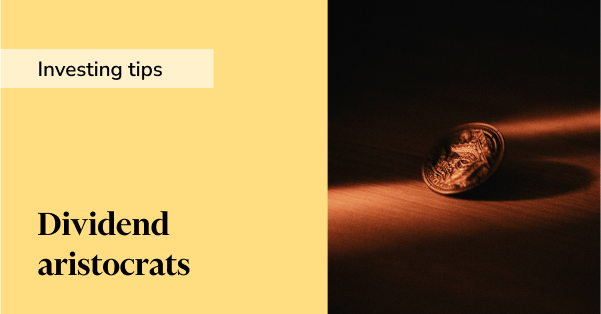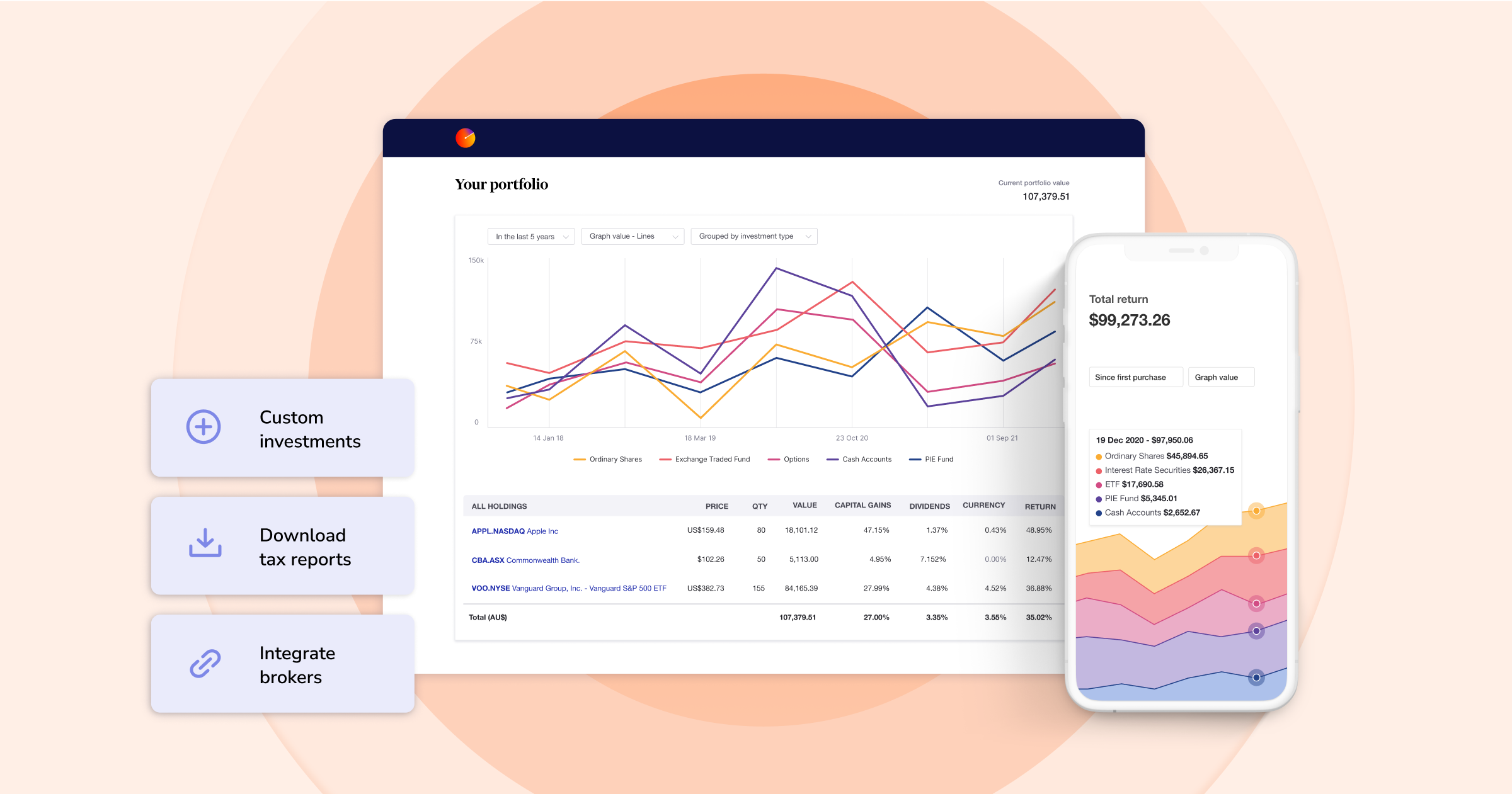What is a dividend aristocrat?
Dividend aristocrats are S&P 500 companies that consistently pay a dividend to shareholders and have raised the size of this annual payout over time. Generally, a stock is considered a dividend aristocrat if it increases its dividend reliably and consistently for at least 25 years. This longevity is the key point although additional factors like company size and market capitalisation are sometimes applied to dividend aristocrats (also known as dividend champions).

What makes a stock a dividend aristocrat?
Dividends are derived from a company's profits, so it is fair to assume that dividend payments are a sign of financial health. Some investors take this further and base their investment strategy on buying established companies with a history of good dividends to add stability to their portfolio. Amongst these dividend-paying stocks, dividend aristocrats are a special category due to their long track record of both making and raising their payouts over time. This can form the basis of a lucrative, income-paying portfolio.
While the term ‘dividend aristocrat’ is defined slightly differently across markets and by various market operators, these are generally large, stable companies with solid, cash-generating businesses. They typically don’t have many places to reinvest their free cash flow, allowing them to pay it out to shareholders. This will not suit investors looking for the next hyper-growth company but will appeal to those who value resilient business models that can keep the cash flowing. According to one dividend aristocrat definition, a company must meet the following criteria:
- Be part of the S&P 500 Index
- Pay and raise its dividend for at least 25 straight years
- Have a market capitalisation of at least $3 billion
- Have an average daily trading volume of at least $5 million.
Dividend aristocrats vs. dividend kings
Unlike dividend aristocrats, dividend kings do not need to be members of the S&P 500. However, they do need to have 50 consecutive years of dividend growth rather than the 25 years required for dividend aristocrats – making dividend kings quite rare. It’s possible for a stock to classify as both a dividend aristocrat and a dividend king, and these stocks do exist (see below for an example), however there are currently very few stocks that fit this definition.
Examples of dividend aristocrats
There are currently (as of 1 October 2023) 66 dividend aristocrats, predominantly listed in the US, but distributed across many different parts of the global economy. Sectors include healthcare, consumer staples, financial and industrial. And because they need to have been trading as a publicly listed company for at least 25 years, many are household names. Some examples include:
Realty Income Corp (NYSE: O)
Realty Income is a retail-focused Real Estate Investment Trust (REIT) and a good example of a dividend aristocrat. REITs in the US are required to distribute at least 90% of their earnings to shareholders, which is conducive to steady dividend growth, provided earnings grow over time. Founded in 1969 and listed in 1994, Realty Income has embraced its successful dividend growth history, even labelling itself “The Monthly Dividend Company”. The company derives rental income from all over the United States and the United Kingdom, insulating itself against regional challenges.
While many retail landlords have struggled in the age of Amazon and e-commerce disruptors, Realty Income continues to grow because it owns retail properties that are not part of a wider retail development (such as shopping centres) but instead are standalone properties. This means the properties are viable for many tenants, including government services, healthcare services, and entertainment. Realty Income is a large-cap stock with a market cap of US$35.58 billion and dividend yield of 6.12%.
Coca Cola (NYSE: KO)
Based on its history of payouts, beverage giant Coca-Cola is not only a dividend aristocrat but a dividend king. Founded in 1892, the company has increased its dividend for 61 consecutive years. Today, it is the world’s largest non-alcoholic beverage company, owning or licensing more than 500 non-alcoholic beverages. But how has this dividend king kept the title with soda consumption slowing in developed markets like the US over many years?
While Coca-Cola’s total volumes certainly still rely on sparkling beverages such as soda, the company has gone to great lengths in recent years to diversify away from its core products. The company has acquired multiple still beverage brands − juices, teas, dairy and water − to revitalise its future growth. As a result, many market commentators continue to see Coca-Cola as having a favourable long-term growth outlook, a view underlined by its latest dividend yield of 3.48%.
Unilever (LSE: ULVR)
Based in London, Unilever is one of the world's largest consumer goods companies. It sells a wide variety of products such as skincare, healthcare, personal care, wellness, nutrition and food. Founded in the late 1800s, the company has grown to become a global giant, with products sold in over 190 countries. Some of its best-known brands include Dove and Ben & Jerry’s.
In addition to selling and acquiring brands, the company has more recently begun to shift away from food and beverage products, focusing more on its ice cream segment and personal care business. Unilever's latest dividend yield is 3.7%, and although it has only recently become a dividend aristocrat, the company has been paying out dividends for over a century, making it a popular choice for long-term investors.
Advantages of dividend aristocrats
For investors seeking regular income, there are obvious advantages to investing in stocks that pay out an ever-increasing dividend. More broadly, regular dividend payouts are usually a positive signal to the market that the company is on sound financial footing. Another advantage for some investors is that dividend aristocrats are well-established companies and are almost always large-cap stocks that have operated successfully through many market cycles.
Disadvantages of dividend aristocrats
Dividend-paying companies tend to be slow-growth, often with limited opportunity to reinvest their excess cash flow. This is especially true of dividend aristocrats and investors should always be asking: “Has paying out dividends to shareholders come at the expense of reinvesting profits into the business and maintaining a competitive position?” A dividend that looks good today might be cut in the future if profitability falls. There may also be taxation and capital gains considerations for some investors.
Do dividend aristocrats beat the market?
This will depend on both the sample size of dividend aristocrats included and the period under review. Generally, the Dividend Aristocrat Index has performed in step with the S&P 500 Index over the past decade, albeit with lower volatility than the broader benchmark. Although both indexes provided strong returns, it is worth noting that the Dividend Aristocrat Index did so without any exposure to growth-oriented tech companies.
Are dividend aristocrats safe?
Dividend stocks are known for being safe, reliable investments and dividend aristocrats, with their track record of increasing dividends annually over 25 years, are often considered to be recession-proof companies. However, just because a company is producing dividends doesn’t always make it a safe bet. Management can use the dividend to placate frustrated investors when the share price isn't growing. While dividend yields may look tempting, it is always recommended that you do your own analysis on how any individual stock is positioned over the coming 12 months.
Summary
For long-term investors interested in dividend stocks with a strong track record, it’s worth looking into dividend aristocrats. These stocks can be a great place to start your research on attractive dividend-paying companies, but you still need to carefully analyse each company. These stocks may come with less volatility, but it pays to consider whether paying out dividends to shareholders has come at the expense of reinvesting profits into the business.
Automatically track dividends with Sharesight
Join hundreds of thousands of investors using Sharesight to get the full picture of their performance, inclusive of dividends, capital gains, brokerage fees and foreign currency fluctuations. Sign up today so you can:
- Track all your investments in one place, including stocks in over 40 major global markets, mutual/managed funds, property, and even cryptocurrency
- Automatically track your dividend and distribution income from stocks, ETFs and mutual/managed funds
- Run powerful reports built for investors, including performance, portfolio diversity, contribution analysis, multi-period, multi-currency valuation and future income (upcoming dividends)
- Easily share access to your portfolio with family members, your accountant or other financial professionals so they can see the same picture of your investments as you do
Sign up for a FREE Sharesight account and get started tracking your investment performance (and tax) today.

Disclaimer: This article is for informational purposes only and does not constitute a specific product recommendation, or taxation or financial advice and should not be relied upon as such. While we use reasonable endeavours to keep the information up-to-date, we make no representation that any information is accurate or up-to-date. If you choose to make use of the content in this article, you do so at your own risk. To the extent permitted by law, we do not assume any responsibility or liability arising from or connected with your use or reliance on the content on our site. Please check with your adviser or accountant to obtain the correct advice for your situation.
FURTHER READING

8 ways to use Sharesight's custom groups feature
This blog explains our custom groups feature, including strategies that can help you gain deeper portfolio insights and make more informed investing decisions.

You can time the market – and ETFs are the way to do it
Marcus Today founder and director Marcus Padley discusses timing the market, and how investors can do this using exchange-traded funds (ETFs).

Morningstar analyses Australian investors’ top trades: Q1 2025
Morningstar reviews the top 20 trades by Australian Sharesight users in Q1 2025, and reveals where their analysts see potential opportunities.